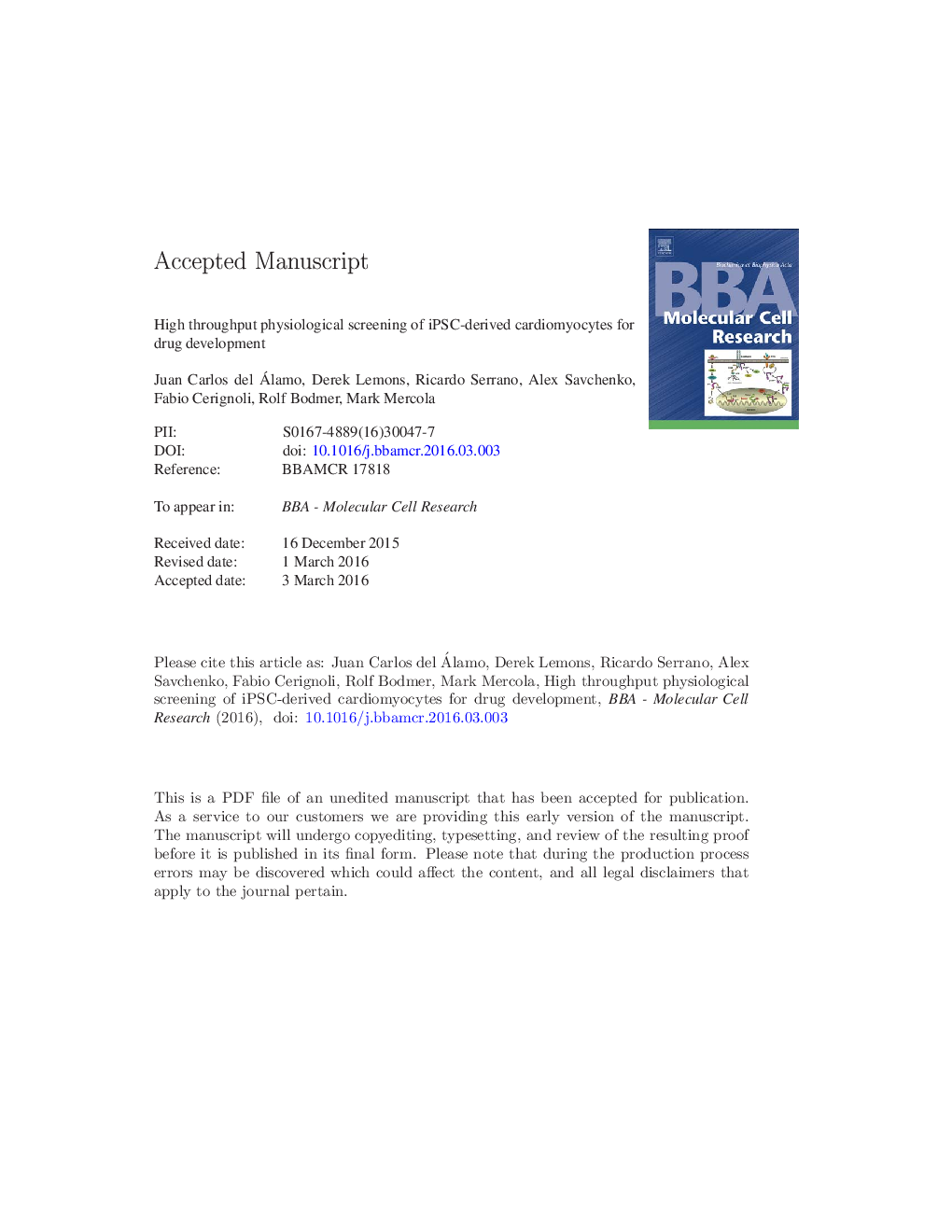| Article ID | Journal | Published Year | Pages | File Type |
|---|---|---|---|---|
| 10801627 | Biochimica et Biophysica Acta (BBA) - Molecular Cell Research | 2016 | 46 Pages |
Abstract
Cardiac drug discovery is hampered by the reliance on non-human animal and cellular models with inadequate throughput and physiological fidelity to accurately identify new targets and test novel therapeutic strategies. Similarly, adverse drug effects on the heart are challenging to model, contributing to costly failure of drugs during development and even after market launch. Human induced pluripotent stem cell derived cardiac tissue represents a potentially powerful means to model aspects of heart physiology relevant to disease and adverse drug effects, providing both the human context and throughput needed to improve the efficiency of drug development. Here we review emerging technologies for high throughput measurements of cardiomyocyte physiology, and comment on the promises and challenges of using iPSC-derived cardiomyocytes to model disease and introduce the human context into early stages of drug discovery. This article is part of a Special Issue entitled: Cardiomyocyte biology: Integration of Developmental and Environmental Cues in the Heart edited by Marcus Schaub and Hughes Abriel.
Keywords
Related Topics
Life Sciences
Biochemistry, Genetics and Molecular Biology
Biochemistry
Authors
Juan C. del Álamo, Derek Lemons, Ricardo Serrano, Alex Savchenko, Fabio Cerignoli, Rolf Bodmer, Mark Mercola,
